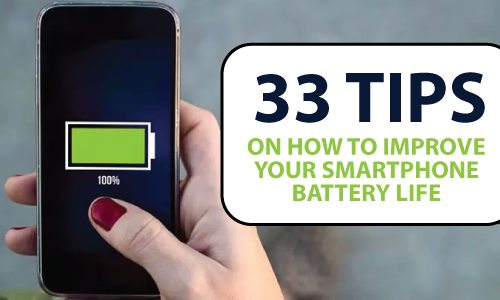Are you tired of struggling to build good habits or break bad ones? Do you find yourself setting goals but never quite reaching them? If so, you're not alone. Habits are powerful forces that can have a profound impact on our lives, yet they're often difficult to control. That's where "Atomic Habits" by James Clear comes in. This groundbreaking book provides practical advice and strategies for developing good habits and eliminating bad ones. The author draws on scientific research and his own personal experiences to offer insights into how habits work and how you can use this knowledge to your advantage.
Whether you're looking to improve your health, productivity, or relationships, Atomic Habits can help you achieve your goals. The book is easy to read and provides actionable steps that you can take to start building better habits today.
In this blog post, we'll explore the key concepts and strategies presented in "Atomic Habits" and provide you with actionable tips for making lasting changes in your life. Whether you're looking to improve your health, increase your productivity, or achieve your goals, the insights in this post will help you unlock the power of atomic habits and start living your best life.
About the Author
James Clear is a writer and speaker who has spent years researching and writing about habits, productivity, and personal growth. His work has been featured in a variety of publications, including the New York Times, Forbes, and Business Insider. "Atomic Habits" is his bestselling book, and for good reason. It's an easy-to-read guide that presents a clear and actionable system for building good habits and breaking bad ones.
Explanation of Why Habits are Important and How they Impact Our Lives
Habits are the building blocks of our lives. They shape our behavior and determine the outcomes we experience. The habits we have can either help us achieve our goals and become the best version of ourselves, or hold us back and prevent us from reaching our full potential.
Habits are powerful because they are automatic. Once a habit is formed, it becomes a part of our subconscious and we perform it without even thinking about it. This is why habits are so difficult to break - they're ingrained in our brains on a deep level.
The impact of habits on our lives can be seen in all areas - from our health and wellness to our careers and relationships. For example, a habit of regular exercise can improve our physical health and boost our mood, while a habit of negative self-talk can lead to low self-esteem and a negative mindset.
According to the author, habits are important because they:
- Shape our identity: Our habits define who we are and what we believe about ourselves. If we have habits of consistently working hard and pushing ourselves out of our comfort zone, we begin to identify as someone who is hardworking and resilient.
- Compound over time: Habits have a cumulative effect - small actions repeated consistently over time can lead to significant results. By building good habits, we can create a ripple effect that transforms our lives.
- Influence our choices: Habits dictate our daily choices and actions. By establishing good habits, we make it easier to make choices that align with our goals and values.
By understanding the importance of habits and their impact on our lives, we can begin to take control of our behavior and make positive changes that will benefit us in the long run.
The Four Laws of Atomic Habits
So, what are the four laws of atomic habits? According to James Clear, they are:
1. Make it obvious: this law is all about creating a clear and visible cue that triggers the habit. For example, if you want to start reading more, you might place a book on your nightstand to remind yourself to read before bed.
2. Make it attractive: this law is about making the habit more appealing and enjoyable. You might try listening to audiobooks while you exercise, or setting up a cozy reading nook to make reading more relaxing.
3. Make it easy: this law is about breaking down the habit into small, manageable steps. For example, if you want to start exercising regularly, you might start with just five minutes a day and gradually increase the time as the habit becomes more ingrained.
4. Make it satisfying: this law is about finding ways to reward yourself for sticking to the habit. For example, you might treat yourself to a small indulgence after completing your daily workout or reading for a certain amount of time.
By following these four laws, you can build good habits that stick and break bad habits that hold you back.
Explanation of Each Law and How They Work Together
Now that we've introduced the four laws of atomic habits, let's dive a bit deeper into each one and how they work together to help you build good habits and break bad ones.
The first law, make it obvious, is all about creating a clear and visible cue that triggers the habit. This might mean setting out your workout clothes the night before, so you're reminded to exercise first thing in the morning. Or, it might mean putting a water bottle on your desk to remind you to drink more water throughout the day. By making the habit obvious, you increase the chances of following through with it.
The second law, make it attractive, is about making the habit more enjoyable and appealing. This might mean finding ways to make exercise more fun, like listening to audiobook or working out with a friend. Or, it might mean finding a way to make healthy eating more delicious, like experimenting with new recipes or trying new cuisines. By making the habit attractive, you increase the likelihood of sticking with it long-term.
The third law, make it easy, is about breaking the habit down into small, manageable steps. This might mean starting with just five minutes of meditation a day, and gradually increasing the time as the habit becomes more ingrained. Or, it might mean breaking a big goal, like writing a book, down into smaller, achievable tasks, like writing for 15 minutes a day. By making the habit easy, you remove barriers and make it more likely that you'll follow through.
Finally, the fourth law, make it satisfying, is about finding ways to reward yourself for sticking with the habit. This might mean treating yourself to a massage after completing a month of daily workouts, or buying a new book after finishing a writing project. By making the habit satisfying, you create positive associations and reinforce the behavior.
All four laws work together to create a powerful system for building good habits and breaking bad ones. By making the habit obvious, attractive, easy, and satisfying, you create an environment that supports your goals and makes it easier to stick with them.
Examples of How the Laws can be Applied in Real Life
Now that we've explored the four laws of atomic habits and how they work together, let's take a look at some real-life examples of how you can apply these principles to build good habits and break bad ones.
Example 1: Exercise
If you're looking to start exercising regularly, you can apply the four laws of atomic habits as follows:
Make it obvious: Set out your workout clothes the night before and schedule your workout at the same time every day, so it becomes a consistent part of your routine.
Make it attractive: Find ways to make exercise more enjoyable, like listening to music, working out with a friend, or trying new workouts to keep things interesting.
Make it easy: Start with a small, achievable goal, like working out for just five minutes a day, and gradually increase the time as the habit becomes more ingrained.
Make it satisfying: Find ways to reward yourself for sticking with your workout routine, like treating yourself to a massage or a new workout outfit.
By applying these four laws, you can create a sustainable exercise habit that becomes an enjoyable part of your daily routine.
Example 2: Reading
If you're looking to start reading more, you can apply the four laws of atomic habits as follows:
Make it obvious: Keep a book on your nightstand or in your bag, so you're reminded to read whenever you have some downtime.
Make it attractive: Find ways to make reading more enjoyable, like creating a cozy reading nook or joining a book club to discuss your favorite books with others.
Make it easy: Start with a small goal, like reading for just 10 minutes a day, and gradually increase the time as the habit becomes more ingrained.
Make it satisfying: Find ways to reward yourself for sticking with your reading habit, like treating yourself to a new book or a relaxing evening of reading.
By applying these four laws, you can create a sustainable reading habit that enriches your life and expands your knowledge.
These are just a few examples of how the four laws of atomic habits can be applied in real life. By applying these principles to your own habits, you can create lasting change and achieve your goals in a way that feels manageable and enjoyable.
How to Build Good Habits: The Role of Identity and Environment
In "Atomic Habits," author James Clear emphasizes the importance of identity and environment in habit formation. He argues that in order to build good habits, we must first establish a strong sense of self-identity that aligns with the habits we want to cultivate.
This means identifying not just what we want to do, but who we want to be. By defining ourselves in terms of our desired habits, we can create a powerful internal motivation that motivates us to our goals. For example, if you want to become a runner, you might start identifying as a "runner" and visualizing yourself completing a marathon.
Clear also emphasizes the importance of our environment in shaping our habits. Our surroundings can either support or hinder our desired habits, so it's important to design our environment in a way that makes it easy to do the right thing and hard to do the wrong thing.
For example, if you want to eat healthier, you might start by rearranging your pantry to put healthy snacks at eye level and move junk food out of sight. You could also make a habit of grocery shopping on Sundays and prepping healthy meals for the week ahead, so you always have healthy options on hand.
By focusing on our identity and environment, we can create a strong foundation for building good habits that last. Clear also emphasizes the importance of tracking our progress and holding ourselves accountable, using tools like habit trackers and accountability partners to stay on track.
Ultimately, building good habits is about creating a system that supports our desired behaviors and reinforces our identity as someone who prioritizes personal growth and self-improvement. By focusing on the small, consistent actions that build momentum over time, we can create lasting change and achieve our goals in a way that feels natural and sustainable.
Practical Tips for Creating and Reinforcing Good Habits
Now that we've discussed the importance of identity and environment in habit formation, let's explore some practical tips for creating and reinforcing good habits.
Start Small: As we mentioned earlier, habits are formed by repetition. By starting with small, manageable habits, you can build momentum and gradually increase the difficulty over time. For example, if you want to start a daily meditation practice, you might start by meditating for just one minute each day, and gradually increase the time as it becomes easier.
Make it Visible: Clear suggests making your habits visible by tracking your progress and using habit cues to remind yourself of your desired behavior. You might use a habit tracker app, hang a calendar on your wall, or place a sticky note on your computer to remind you to take breaks and stretch.
Use Habit Stacking: Habit stacking involves linking a new habit to an existing habit, making it easier to remember and reinforce. For example, if you want to start doing pushups each morning, you might stack this habit onto your existing habit of brushing your teeth.
Create an Accountability System: Having someone to hold you accountable can be a powerful motivator for building and reinforcing good habits. You might enlist a friend or family member to check in with you regularly, or join a group or online community focused on habit formation.
Celebrate Your Wins: Finally, it's important to celebrate your wins and acknowledge your progress along the way. This can be as simple as giving yourself a pat on the back, treating yourself to a favorite snack, or sharing your accomplishments with a supportive friend or family member.
By incorporating these practical tips into your habit-building strategy, you can increase your chances of success and create lasting change in your life. Remember, habits are a powerful tool for personal growth and self-improvement, and with consistent effort and dedication, you can achieve your goals and transform your life.
How to Overcome Bad Habits
Breaking bad habits can be even more challenging than building good ones. Bad habits are often deeply ingrained and reinforced by triggers and rewards, making them difficult to break. However, with the right strategies, it is possible to identify and overcome these negative patterns of behavior.
Identify Your Triggers: The first step in breaking a bad habit is to identify the triggers that lead to it. This might involve paying attention to your thoughts and emotions, as well as the environmental cues that signal it's time to engage in the habit.
Replace the Habit with a Positive Behavior: Once you've identified your triggers, you can begin to replace the bad habit with a more positive behavior. For example, if you tend to reach for a sugary snack when you feel stressed, you might replace this habit with a brief meditation or deep breathing exercise.
Create a Plan for Dealing with Cravings: When breaking a bad habit, it's common to experience cravings for the old behavior. Having a plan in place for dealing with these cravings can be a powerful tool for overcoming them. This might involve having healthy snacks on hand, distracting yourself with a favorite activity, or reaching out to a support system.
Surround Yourself with Positive Influences: Surrounding yourself with positive influences, whether it be supportive friends or inspirational role models, can help you stay motivated and on track when breaking a bad habit.
Practice Self-Compassion: Breaking a bad habit is a challenging process, and it's important to be kind to yourself along the way. Practicing self-compassion can help you stay focused on your goals and bounce back from setbacks and slip-ups.
By using these strategies, you can begin to identify and overcome your bad habits, building a happier and healthier life for yourself. Remember, breaking a bad habit is not an overnight process, but with consistent effort and dedication, it is possible to create lasting change.
What are Common Challenges to while Building New Habits and How to Overcome Them?
While building good habits can be incredibly beneficial, it is not always easy. Many people face common challenges when trying to establish new habits, such as lack of motivation, lack of time, or a tendency to fall back into old habits. However, with some effort and the right mindset, it is possible to overcome these obstacles and stay on track.
Lack of Motivation: One of the most common obstacles to building good habits is a lack of motivation. To combat this, it can be helpful to identify the underlying reason for wanting to build the habit in the first place. Perhaps you want to improve your health or advance in your career. Focusing on the positive outcomes of the habit can help you stay motivated.
Lack of Time: Another common obstacle is a perceived lack of time. However, it is possible to find small pockets of time throughout the day to work on your habit. This might mean waking up a little earlier, cutting out non-essential activities, or using your lunch break to work on your habit.
Falling Back into Old Habits: It is common to experience setbacks or slip-ups when building a new habit. However, it's important to remember that these setbacks are not failures. Instead of giving up, try to identify what caused the slip-up and create a plan for avoiding it in the future.
Lack of Support: Building good habits can be challenging, and having a supportive community can make a big difference. Consider joining a group or seeking out a mentor to help keep you accountable and motivated.
By recognizing and overcoming these obstacles, you can build strong and lasting habits that can transform your life. Remember, habit formation is a journey, not a destination. By staying committed and focused, you can create positive change and achieve your goals.
Final Thoughts and Summary of Key Takeaways
Overall, Atomic Habits provides a comprehensive and practical guide to building good habits and breaking bad ones. Here are some key takeaways from the book:
- Habits are the building blocks of our lives, and small improvements can lead to significant changes over time.
- The Four Laws of Behavior Change provide a framework for creating and reinforcing good habits.
- Environment and identity play important roles in habit formation.
- Breaking bad habits can be challenging, but it's possible with the right strategies and mindset.
- Overcoming common obstacles such as lack of motivation, time, and support is essential to building strong habits.
If you're interested in improving your habits, here are some personal recommendations:
- Start small: Identify one small habit to work on and commit to it daily.
- Track your progress: Use a habit tracker to monitor your progress and stay accountable.
- Surround yourself with support: Seek out a supportive community or accountability partner to keep you motivated.
- Remember that habits are a journey: Be patient with yourself and celebrate small wins along the way.
Overall, Atomic Habits is a highly recommended read for anyone looking to create positive change in their lives. With its practical strategies and actionable advice, it can help you develop habits that will lead to success and fulfillment in all areas of your life.
Final Words
To summarize, habits are the foundation of our lives, and building good habits can have a significant positive impact on our well-being, productivity, and overall success. Atomic Habits by James Clear provides an easy-to-follow framework for building habits that stick, and it's up to us to take action and implement these strategies in our daily lives.
By committing to small, incremental changes and staying consistent, we can create positive habits that will lead to long-term success and fulfillment. Whether it's improving our health, productivity, or relationships, developing good habits is key to achieving our goals and living a happy life.
So, if you're ready to start building better habits and making positive changes in your life, there's no better time than now. Take action and begin implementing the strategies outlined in this book. With dedication and effort, you can create the life you've always wanted, one habit at a time.
























